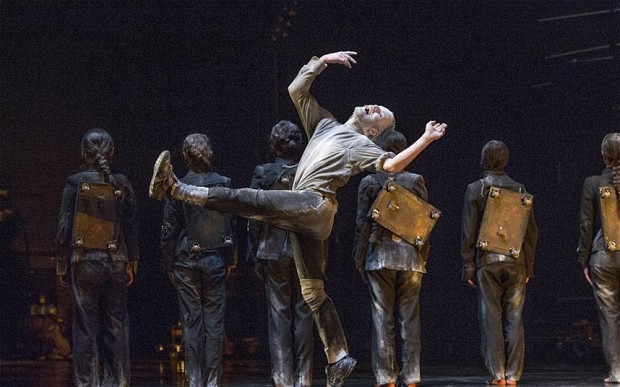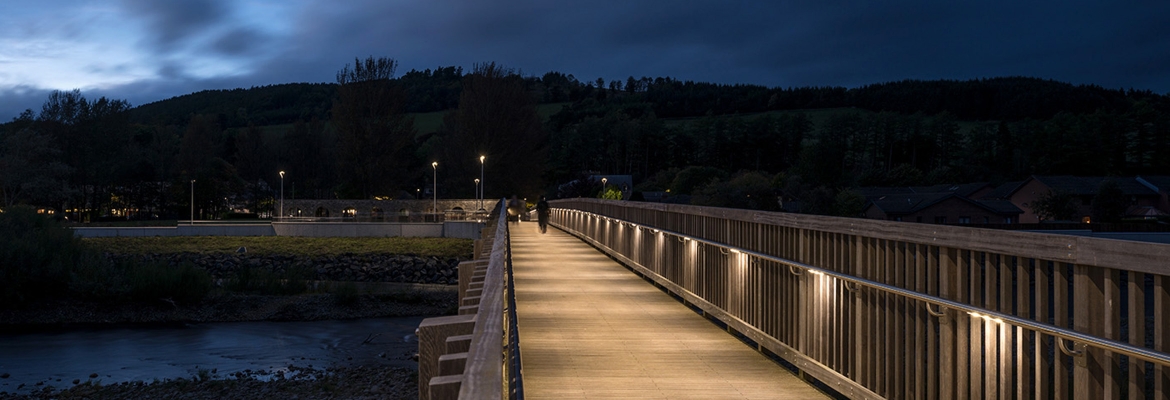You have no items in your cart. Want to get some nice things?
Go shopping
In a recent Guardian article, Simon Stephens said the following about dance theatre:
As a playwright, the notion that it’s possible to communicate graceful interpretations of what it is to be human without using language really energises me. I think it’s very important for playwrights to investigate forms that aren’t dependent on language. Choreography and theatre share so much: they’re both time-based mediums, they’re both theatrical, they both take place on a stage, but I think we can learn a lot from the fundamental differences between movement and language.
In recent years, dance theatre has begun to seep more and more into the mainstream with more “traditional” theatres beginning to programme theatre whose “language” largely takes the form of movement. It’s the next logical step after Pina Bausch’s Tanztheater of the 1980s, as artists seem to be once again interrogating how the form can make sense to us in the contemporary world.
It’s worth pointing out that dance theatre is different from physical theatre; I’m not concerned here with the likes of Frantic Assembly or DV8, though links between those companies and contemporary dance theatre can definitely be traced. Those companies still rely on the spoken word to relay a lot of their meaning, while dance theatre companies tend to use dance – in all its guises – as a tool for creating meaning in other ways, proving that we don’t need dense, verbose prose to understand a maker’s ideas and that the imagination of English audiences is far more honed than naturalism would have us believe.
At university, I was lucky enough to see some of the most critically acclaimed pieces of dance theatre to hit English shores during that period, as companies began in London before touring the regions. Charlotte Vincent’s Motherland (which is still touring), demonstrates the wide palette of ideas on which dance theatre can draw, using song, humour and paint to make a feminist critique of the treatment of children in the twenty-first century. Gorgeous images are evoked using stilettoes, soil and wine, and a vague narrative of a young adolescent girl is spun, all through the use of dance and using little spoken English, creating a layered comment on modern womanhood as complex as any conventional play I’ve seen.
Aakash Odedra’s Rising errs, arguably, on the side of “dance”, but its extensive use of lighting and sound means it still feels like a piece of theatre. It takes the form of four solo, largely independent, dances, each of which use a different aspect of Odedra’s training to create motifs and ideas, sparking thoughts of oppression and freedom. The final sketch, Constellation, still haunts me to this day, and though it involves little genuine “dance”, Odedra’s swinging of glowing light bulbs meant the whole theatre feels like it is in motion, showing the infinite power of a simple image executed with integrity.
More recently, James Thiérrée’s Tabac Rouge affirmed that idea that set can become performer, as a giant mirror swung around the stage on castors like a beautiful beast. It’s a strange, eclectic show (defined as a “choreodrama”), which takes the form of a series of sketches invoking clowning and dance, held together by little more than a Lear-like protagonist and a vague sense of totalitarianism. Throughout, however, the body and its movements hold the attention most, with Thiérrée’s character and a group of female dancers providing the flexible canvas onto which we project our imaginations. Words are used, but it’s unclear whether they’re a difficult-to-decipher foreign language or a dialect all of the company’s own creation.
The piece of dance theatre which has had the biggest impact on me, however, is Dave St-Pierre’s Un peu de tendresse bordel de merde! (A little tenderness for crying out loud!). Again, this piece uses sketches to make its points about gender and tenderness, featuring a cast of male and female dancers who spend large portions of the show naked (and, sometimes, in the auditorium itself). Each segment goes on for slightly longer than feels natural, to the extent that the performers are visibly in pain, thus allowing some kind of transcendence to take hold. Though St-Pierre uses spoken narration in this piece, it is the movement which sears itself onto the psyche, as naked bodies in space take on vast and numerous meanings.
What all these piece have in common, however, is that they draw on aspects of theatre just as much as they do dance. They recognise the importance of movement and bodily feeling in making important intellectual points, highlighting how complex questions can be asked without spoken language whilst also creating a visually stimulating experience. Stephens is onto something in his upcoming project with Hofesh Shechter, as the roles of “playwright” and “choreographer” can be seen as having similar goals in creation of meaning; it is only their means which are different. The sooner the rest of our theatre sector recognises that, the better.

About Dan Hutton
Dan is a freelance critic and theatre-maker. He won the Howard Hobson Award for Theatre Criticism at NSDF in 2010, 2011 and 2013, and in 2013 was the runner-up for the Edinburgh Fringe Allen Wright Award for Arts Journalism. Dan is also a director and co-runs Barrel Organ Theatre.




